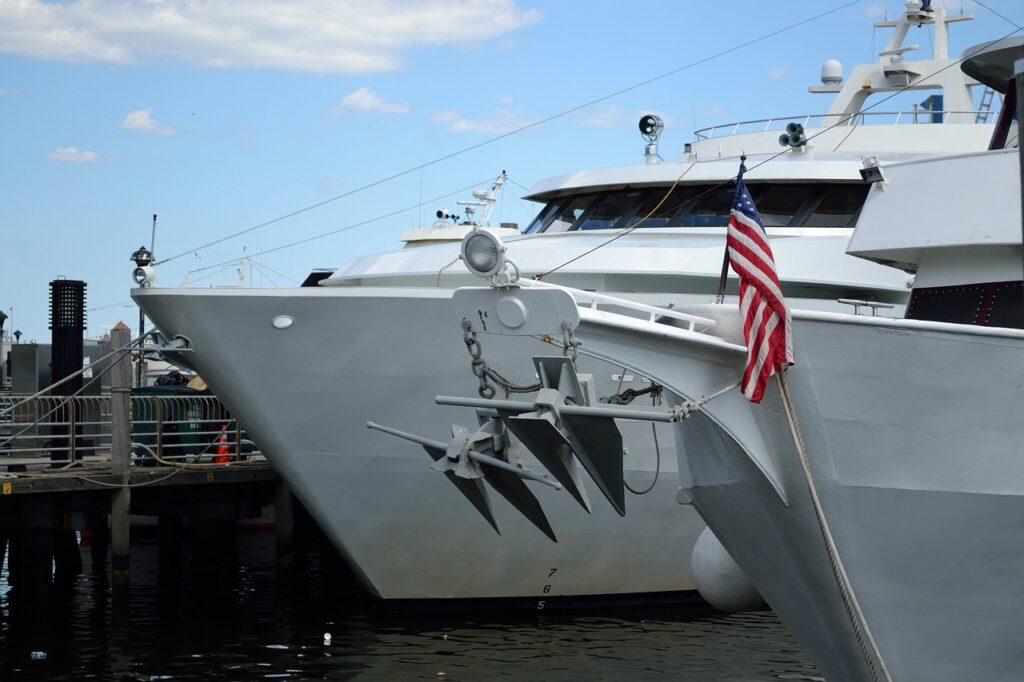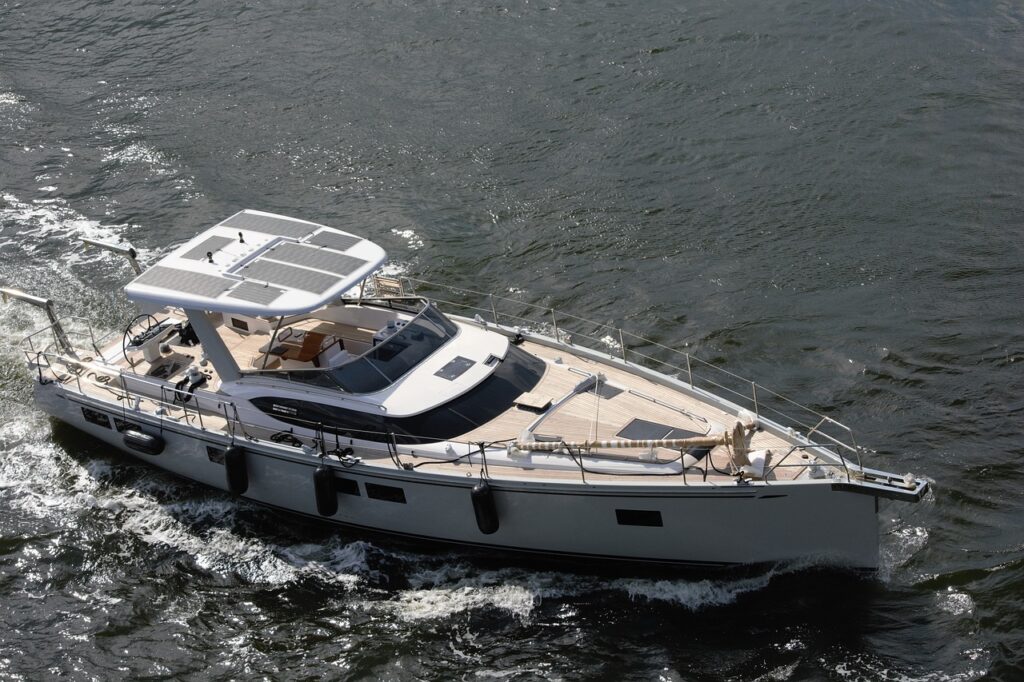
Embarking on a solo cruise is an exciting adventure that promises unforgettable experiences and the opportunity to unwind in the lap of luxury. However, amidst the anticipation, it is crucial to be aware of the hidden costs that may come along the way. From onboard amenities to gratuities and excursions, this article unravels the often overlooked expenses involved in budgeting for a solo cruise. So, before you set sail into the shimmering blue waters, arm yourself with the knowledge of these hidden costs to ensure a stress-free and well-planned voyage.

Understanding the Cost Breakdown of a Solo Cruise
Planning a solo cruise can be an exciting adventure filled with new experiences and opportunities for self-discovery. However, it is important to understand the cost breakdown of a solo cruise to ensure that you have budgeted effectively and avoid any financial surprises along the way. In this comprehensive guide, we will break down the various components of a solo cruise fare, identify any hidden costs that may arise, evaluate the cost of onboard entertainment and services, account for shore excursions, examine onboard shopping and souvenirs, budget for food and drink, and consider travel insurance and potential medical costs. By following this guide, you will be well-prepared to embark on your solo cruise without breaking the bank.
Defining a Solo Cruise
Before we delve into the cost breakdown of a solo cruise, let’s first define what a solo cruise entails. A solo cruise, as the name suggests, is a cruise taken by an individual traveling alone. Unlike traditional cruises where accommodations are typically priced based on double occupancy, solo cruises cater specifically to solo travelers, offering cabins designed for single occupancy. This allows solo travelers to explore the world at their own pace while enjoying the amenities and services provided by the cruise line.
Components of Cruise Fare
When considering the cost breakdown of a solo cruise, it is important to understand the various components that make up the cruise fare. Typically, a cruise fare includes the cost of the cabin, meals, onboard entertainment, access to amenities, and transportation to various ports of call. However, it is essential to look beyond the ticket price and consider additional costs that may arise throughout your solo cruise journey.
Additional Costs Beyond Ticket Price
While the cruise fare covers many aspects of your solo cruise, there are additional costs to be mindful of. These may include port charges and taxes, airfare or other transportation to the ship, hotels, and meals before and after the cruise, as well as any off-ship excursions or activities you may choose to participate in. By understanding these potential costs, you can better budget for your solo cruise experience and avoid any financial surprises.
Identifying Standard Cruise Costs
To effectively budget for a solo cruise, it is crucial to identify the standard costs associated with cruising. By considering these costs upfront, you can ensure that your overall budget remains on track and that you have allocated financial resources for all aspects of your cruise.
Cruise Fare
The cruise fare is the base cost of your solo cruise and typically includes your accommodations, meals, entertainment, and access to onboard amenities. It is essential to research different cruise lines and itineraries to find the one that best fits your budget and preferences. The cost of a solo cruise fare can vary depending on factors such as the cruise line, ship, cabin category, itinerary, and time of year. It is important to carefully review the details of each cruise fare to understand what is included and what additional costs you may incur.
Port Charges and Taxes
Port charges and taxes are additional fees that are added to the cruise fare. These fees are used to cover the costs associated with using ports of call and are typically calculated on a per-person basis. The amount you can expect to pay in port charges and taxes will vary depending on the specific itinerary and the ports visited. It is important to factor these costs into your budget to ensure that you have accounted for all expenses associated with your solo cruise.
Airfare or Other Transportation to the Ship
In addition to the cruise fare, you will need to consider the cost of transportation to the ship. This may include airfare if you are flying to the port of embarkation, as well as ground transportation if you are traveling by car, train, or bus. The cost of airfare can vary greatly depending on your location, the time of year you are traveling, and how far in advance you book your flights. It is advisable to research and compare prices from different airlines to secure the best possible deal. Additionally, if you are driving or taking public transportation, be sure to factor in the cost of gas, tolls, and parking fees.
Hotels and Meals Before and After the Cruise
While your cruise fare includes meals, it is important to consider any additional expenses you may incur before and after the cruise. If you arrive at the port of embarkation a day or two prior to the cruise, you will need to secure accommodations and meals for those days. Likewise, if you plan to stay at the disembarkation port for a day or two after the cruise, you will need to budget for hotel stays and meals during that time. Researching and booking hotels in advance can help you secure the best rates and ensure a smooth transition into and out of your solo cruise experience.
Spotting Hidden Solo Cruise Costs
In addition to the standard costs associated with a solo cruise, there are some hidden costs that may catch you off guard if you are not prepared. By being aware of these potential expenses, you can budget accordingly and avoid any financial surprises.
Single Supplement Fees
One significant hidden cost associated with solo cruises is the single supplement fee. Due to the industry’s traditional pricing structure based on double occupancy, solo travelers are often required to pay a single supplement fee to occupy a cabin designed for two. This fee can significantly increase the overall cost of your solo cruise and should be factored into your budget. However, some cruise lines now offer solo cabins or reduced single supplement fees, so it is worth researching and comparing different options to find the best deal for your solo cruise.
Gratuities and Tipping Policy
Gratuities and tipping policies can be another hidden cost to consider when budgeting for a solo cruise. Many cruise lines have a daily gratuity charge that covers tips for the cabin stewards, dining room staff, and other service staff onboard. It is important to research and understand the tipping policy of the particular cruise line you choose, as it may vary from line to line. By factoring in these additional charges, you can ensure that you have allocated enough funds to cover gratuities during your solo cruise.
Dynamic Dining Fees
Some cruise lines offer dynamic dining options, allowing passengers to choose from a variety of specialty restaurants. While these dining options can enhance your culinary experience onboard, they often come with an additional fee. It is important to research the dining options available on your chosen cruise line and factor in any additional fees associated with specialty dining. By budgeting for these extra costs, you can enjoy a variety of dining experiences without exceeding your predetermined budget.
Evaluating Onboard Entertainment and Activities
One of the highlights of a solo cruise is the wide range of onboard entertainment and activities available. From live performances and fitness classes to art auctions and cooking demonstrations, there is something to suit every interest. However, it is essential to consider the cost of these onboard experiences to ensure that they fit within your budget.
Cost of Onboard Entertainment
While many onboard entertainment options are included in the cruise fare, there may be additional costs associated with certain shows, performances, or events. For example, some cruise lines offer Broadway-style productions or live music performances that require an additional ticket. It is important to review the cruise line’s entertainment schedule and determine if there are any additional fees for specific shows or events that you wish to attend.
Specialty Classes and Seminars
Cruise ships often offer a variety of specialty classes and seminars, ranging from photography and painting workshops to cooking and mixology demonstrations. While these classes can be a great way to learn something new and enhance your onboard experience, they may come at an additional cost. Before enrolling in any specialty classes or seminars, be sure to review the associated fees and include them in your budget.
Fitness and Wellbeing Activities
Maintaining your fitness routine and focusing on your wellbeing while on a solo cruise is important. Many cruise ships offer state-of-the-art fitness centers, group exercise classes, and wellness activities such as yoga or meditation sessions. While some of these activities may be included in the cruise fare, others may require an additional fee. It is advisable to review the onboard fitness and wellness offerings and determine if there are any additional costs associated with the activities you wish to participate in.

Anticipating the Cost of Onboard Services
Onboard services can greatly enhance your solo cruise experience, but it is crucial to consider the cost of these services when budgeting for your trip. From rejuvenating spa treatments to staying connected with loved ones through internet services, factoring in these costs will ensure that you have allocated enough funds for the services you wish to enjoy.
Spa and Beauty Treatments
Cruise ships often offer a variety of spa and beauty treatments, including massages, facials, and hair styling services. While these treatments can provide a luxurious and relaxing experience, they generally come at an additional cost. It is important to review the spa menu and prices to determine which treatments you would like to indulge in and include them in your budget accordingly.
Internet and Communication Services
While disconnecting from the outside world and immersing yourself in the cruise experience can be refreshing, it may also be necessary to stay connected during your solo cruise. Many cruise ships offer internet and communication services, such as Wi-Fi packages and international calling, but these services often come with a fee. Research the internet and communication options available on your chosen cruise line and determine if there are any additional costs associated with staying connected during your voyage.
Laundry Services
Cruise ships typically offer laundry services for passengers who wish to have their clothes cleaned during their voyage. While it is possible to pack enough clothing to last the duration of your trip, this may not be practical for longer cruises. Review the laundry services and associated fees offered by your chosen cruise line to determine if this is an expense you need to account for. By budgeting for laundry services, you can ensure that you have clean clothes throughout your solo cruise without having to pack excessively.
Accounting for Shore Excursions
Exploring the various ports of call is an exciting aspect of any cruise, and participating in shore excursions allows you to delve deeper into the local culture and attractions. However, it is important to consider the cost of shore excursions when budgeting for your solo cruise.
Understanding Shore Excursion Costs
Shore excursions are organized activities or tours that take place while the ship is at a port of call. These excursions offer the opportunity to explore the destinations visited during your solo cruise and can range from guided city tours to adventure activities such as snorkeling or hiking. It is essential to review the shore excursion offerings and associated costs provided by your chosen cruise line. By understanding the costs upfront, you can budget accordingly and select the excursions that align best with your interests and budget.
Optional vs Included Shore Excursions
Some cruise lines include certain shore excursions in their cruise fare, while others offer a variety of optional excursions that come at an additional cost. It is essential to determine whether your chosen cruise line includes any shore excursions in the fare or if all excursions require an extra fee. By considering these factors, you can budget for the excursions you would like to participate in and ensure that you have allocated enough funds accordingly.
Budget-Friendly Alternatives
If you are looking to keep your shore excursion costs down, there are budget-friendly alternatives to consider. Instead of opting for guided tours organized by the cruise line, you can explore the destinations independently, either by walking or using local transportation. This allows you to experience the local culture at your own pace and often at a lower cost. Researching and planning your own shore excursions can be a rewarding experience and may provide additional savings that can be used elsewhere during your solo cruise.

Examining Onboard Shopping and Souvenirs
Shopping onboard is a popular activity among cruise passengers, offering a variety of duty-free items, luxury goods, and unique souvenirs. However, it is important to budget for these purchases and exercise restraint to avoid overspending.
Price Range for Duty-free Shops
Duty-free shops are a common feature on cruise ships and offer a wide range of products, including alcohol, tobacco, fragrances, cosmetics, and electronics. These items are often priced lower than their retail counterparts on land due to tax exemptions. It is important to set a budget for duty-free shopping and stick to it to avoid unnecessary expenses. While duty-free shopping can provide great savings, it is important to prioritize your spending and focus on items that you truly need or intend to use.
Art Auctions and Other High-End Shopping
High-end shopping, such as art auctions or exclusive boutiques, is another enticing feature found on many cruise ships. These luxury indulgences can add significant costs to your solo cruise experience if you are not careful. It is important to consider these potential expenses and set a budget that aligns with your financial resources. By being mindful of your spending and focusing on memorable experiences rather than material possessions, you can avoid overspending and make the most of your solo cruise adventure.
Budget for Souvenirs and Personal Purchases
One of the joys of traveling is bringing home souvenirs and personal mementos to remember your experiences. While it is tempting to purchase various keepsakes during your solo cruise, it is important to budget for these purchases to avoid exceeding your overall spending limit. Allocate a portion of your budget specifically for souvenirs and personal purchases, and focus on selecting items that hold sentimental value and represent the destinations you have visited. By practicing mindful shopping, you can create lasting memories without straining your budget.
Budgeting for Food and Drink
Food and drink expenses can accumulate quickly during a solo cruise, making it essential to consider these costs when setting your budget. From specialty dining experiences to beverage packages, it is important to plan accordingly to avoid overspending on food and drink.
Cost of Specialty Dining
While the cruise fare typically includes meals from the main dining venues, many cruise lines offer specialty dining options for an additional fee. These specialty restaurants often provide unique culinary experiences and a more intimate atmosphere. However, it is crucial to consider the associated costs when budgeting for your solo cruise. Research the specialty dining options available on your chosen cruise line and review the prices to determine which experiences are worth the additional expense. By planning ahead and allocating a specific budget for specialty dining, you can enjoy these culinary delights without worrying about exceeding your overall spending limit.
Alcohol and Beverage Packages
Cruise ships often offer various beverage packages that allow you to enjoy unlimited alcoholic and non-alcoholic beverages throughout your voyage. These packages can be a convenient and cost-effective option for those who plan to indulge in alcoholic beverages or a selection of non-alcoholic drinks. However, it is important to carefully review the terms and prices of these packages to determine if they align with your preferences and budget. If you are not a frequent drinker or have specific dietary restrictions, it may be more cost-effective to purchase beverages individually rather than investing in a beverage package. By evaluating your drinking habits and preferences, you can choose the option that best suits your needs without overspending.
Room Service Charges
Room service is a convenient option for solo travelers who prefer to enjoy a meal or snack in the comfort of their cabin. While most cruise lines offer complimentary room service for basic items, additional charges may apply for certain menu items or during certain hours. It is important to review the room service menu and associated charges to determine if this is an expense you need to consider. By budgeting for room service charges, you can enjoy the convenience of in-cabin dining without any financial surprises.

Considering Travel Insurance and Medical Costs
Travel insurance is an essential aspect of any trip, including a solo cruise. While no one wants to think about potential mishaps or accidents during their vacation, it is important to be prepared for the unexpected. Additionally, there may be medical costs associated with onboard medical services if you require any form of medical attention during your solo cruise.
Importance of Travel Insurance
Travel insurance provides financial protection in case of trip cancellations, interruptions, or medical emergencies. It is important to choose a comprehensive travel insurance policy that covers the specific needs of your solo cruise. Travel insurance can help mitigate potential financial losses in case of unforeseen circumstances, such as canceled flights or medical emergencies. While travel insurance comes at an additional cost, it provides peace of mind and reassurance that you are financially protected.
Potential Medical Costs on Board
While cruise ships have medical facilities and healthcare professionals onboard, it is important to note that medical services typically come at a cost. Even basic medical consultations or treatments may result in charges that are not covered by your travel insurance. It is advisable to review the onboard medical services and associated fees of your chosen cruise line. By budgeting for potential medical costs, you can ensure that you have allocated enough funds to cover any unexpected health-related expenses that may arise during your solo cruise.
Planning and Preparing for Unexpected Costs
No matter how meticulously you plan and budget for your solo cruise, there may always be unexpected costs that arise along the way. To be prepared for any financial surprises, it is important to have contingency plans in place and allocate emergency funds.
Emergency Funds
Having emergency funds set aside is crucial for any trip, including a solo cruise. It is advisable to allocate a portion of your budget specifically for unforeseen expenses or emergencies that may arise during your journey. These funds can be used to cover unexpected costs such as medical emergencies, missed transportation connections, or unforeseen itinerary changes. By having emergency funds available, you can navigate any unexpected scenarios without compromising your overall budget.
Currency Exchange Rates and International Fees
When cruising to different countries, it is essential to consider currency exchange rates and any associated international fees. While onboard purchases are usually made in the ship’s currency, if you choose to explore the ports of call independently, you may need to exchange currency or make purchases with local currency. It is important to research and understand the currency exchange rates and any associated fees to avoid unnecessary expenses. By planning ahead and being aware of potential currency exchange costs or fees, you can avoid overspending or being caught off guard by additional charges.
Cost Overruns and Budget Buffers
Lastly, it is important to include budget buffers to account for potential cost overruns or unexpected expenses. It is common for unforeseen costs or minor overspending to occur during any trip. By setting aside a buffer amount in your budget, you can accommodate any unexpected expenses without compromising your overall financial plan. Budget buffers provide flexibility and peace of mind, ensuring that you can fully enjoy your solo cruise without constantly worrying about sticking to every last dollar of your original budget.
In conclusion, understanding the cost breakdown of a solo cruise is essential for effective budgeting and avoiding financial surprises along the way. By considering the components of a cruise fare, identifying hidden costs, evaluating onboard entertainment and services, accounting for shore excursions, examining shopping expenses, budgeting for food and drink, and considering travel insurance and potential medical costs, you can ensure that you have a comprehensive understanding of the costs associated with your solo cruise. With proper planning and budgeting, you can embark on your solo cruise adventure with confidence and peace of mind, knowing that you have planned for all expenses and can fully enjoy your journey without breaking the bank.

